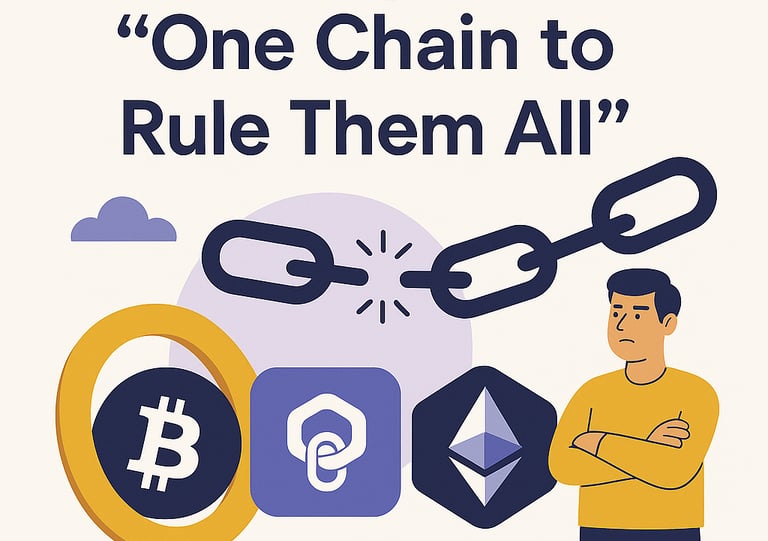The Myth of "One Chain to Rule Them All" — Why Interoperability Matters More Than Dominance
For years, the blockchain world has been obsessed with a single question: “Which chain will become the one?”


For years, the blockchain world has been obsessed with a single question:
“Which chain will become the one?”
Which network will be the foundation of Web3? The Ethereum killer? The Bitcoin successor? The chain that eats all others?
It’s a seductive idea. A digital monarchy. A single source of truth, power, and innovation. But like most seductive ideas in tech, it’s also… a myth.
🧩 The Real World Doesn’t Work That Way
Think about it: the internet doesn’t rely on a single server, app, or domain. You don’t access the entire web from just Google or Facebook — and that’s by design. The modern web is a multi-layered, multi-protocol network of platforms, tools, and providers, all working in parallel.
The same will be true for blockchains. We’re already seeing this reality unfold.
Ethereum still dominates smart contracts. Bitcoin still owns the “store of value” narrative. Solana is carving out high-speed NFT activity. And layer-2 solutions like Arbitrum and Optimism are growing fast.
No single chain can realistically do everything — and that’s not a weakness. That’s a feature.
🔗 Interoperability: The Hidden Infrastructure
As the space grows, the focus has shifted from “Which chain wins?” to “How can chains work together?” And that’s where interoperability becomes the most important idea no one outside Web3 is talking about.
Cross-chain bridges, token standards, decentralized identity protocols, and shared governance models are the building blocks of a world where value and information flow freely between networks. Projects like PCN Chain don’t try to be the center of the universe — they try to connect universes.
This approach recognizes the reality that users and developers alike want choice, not confinement. They want access to DeFi on one chain, NFTs on another, and DAOs on a third — without being locked in.
🛠 Composability > Competition
The future belongs not to the chain that dominates, but to the chains that compose. That is, the ones that are designed to plug into other systems effortlessly. When dApps, tokens, and protocols become truly portable, innovation stops being siloed and starts being synergistic.
This is the core belief behind the multi-chain future: each protocol plays a role, and no single one needs to "win" for the ecosystem to thrive. PCN Chain, for example, benefits not just from its internal mechanics — but from how easily it can communicate and cooperate with others.
💬 A Culture Shift in Web3 Thinking
It’s time to move beyond maximalism — the idea that “my chain is better than yours.” Tribalism slows us down. The next wave of innovation won’t come from competition alone; it will come from collaboration.
As more developers, communities, and protocols embrace that ethos, we'll see fewer “wars” and more bridges. Less fighting for dominance, more building together. And ultimately, a richer, more resilient decentralized world.
🚀 Closing Thoughts
So, is there one chain to rule them all?
No.
And thank goodness for that.
The future of Web3 isn't centralized, isn't singular, and isn't linear. It’s diverse, layered, and deeply interconnected.
Chains like PCN don’t need to conquer — they just need to connect.
That’s the quiet revolution. And it’s already happening.